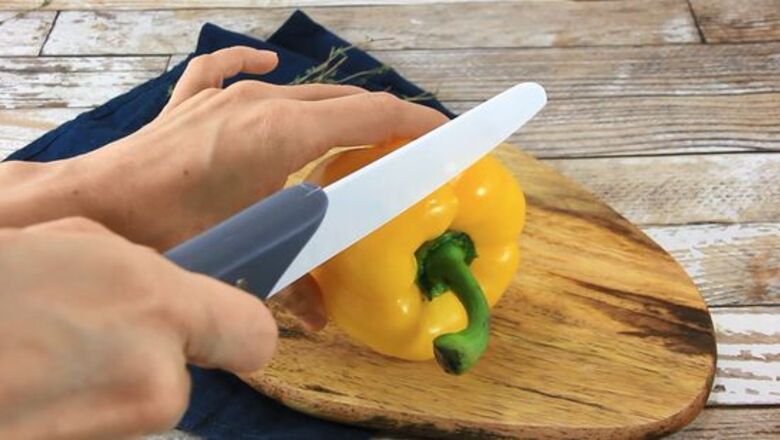
views
Hollowing a Whole Pepper
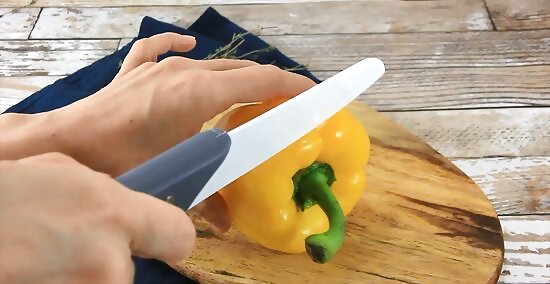
Cut the stem end from the body of the pepper. Most cooks will find it easiest to lay the pepper on its side, the stem toward your strong side (the right if you’re a righty), and then cut crosswise just below the “shoulders.” The entire stem and its base should come off in one piece. Depending on the pepper, there may be quite a bit of flesh remaining attached to the stem, which can be cut free and chopped if desired. Alternatively, the point of a sharp paring or similar knife can be inserted between the stem and the shoulder. Then rotate the pepper in one hand while holding the knife firmly in the other. The stem should come away cleanly.
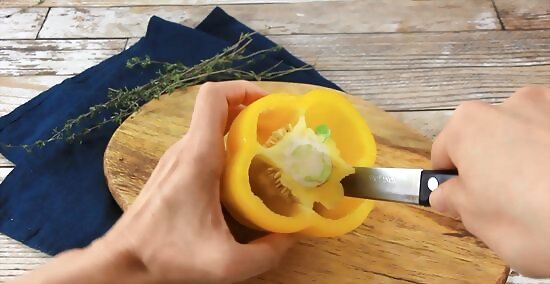
Cut the ribs and seeds away from the flesh. Start by turning the pepper so its opening faces you. Insert the point of a smallish, sharp knife (such as a paring knife) into the pepper and cut through the ribs close to the flesh. Rotate the pepper’s body and continue cutting until all the ribs and seeds are loose, and remove. When using hot peppers, don't touch your eyes or other sensitive areas until you've washed your hands thoroughly, preferably in an acidic solution (a little vinegar or lemon juice does the trick). Wearing gloves may be wise with very hot peppers.
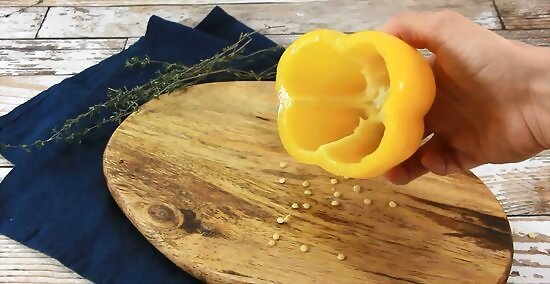
Remove the remaining seeds. Bang the pepper's opening against your hand or a cutting board, or rinse under cold water.
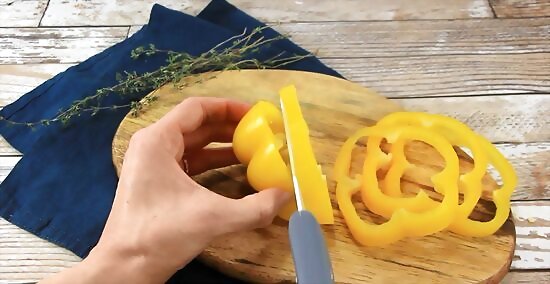
Cut crosswise into rings (optional). Turn the pepper sideways as in step 1 above. Cut crosswise into thin or thick rings, as desired.
Julienning Finely
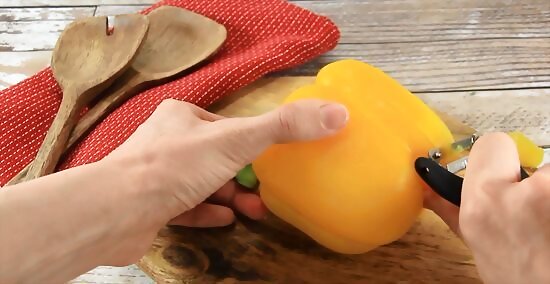
Peel the main flesh of the pepper (optional). Using a good vegetable peeler, serrated or not, start at the rounded shoulders and peel toward the point. You won't be able to peel everything, because some parts will be in the dents or pleats, and not accessible to the flat blade. Peeling peppers makes them more delicate to bite and flavor. The skins are somewhat bitter, especially with green peppers, as well as being tough to chew.
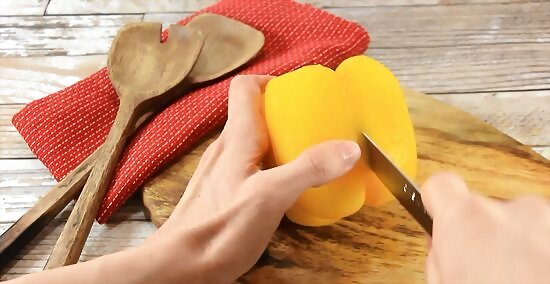
Separate the flesh along the pleats. Place the pepper point-side down on a cutting board, or hold firmly in your off-hand if you're comfortable cutting in-hand. Insert a sharp knife’s point into the top of each pleat, at the stem, and cut downward until you reach the point. Rotate the pepper and repeat until the flesh is separated into sections. Pull the sections outward, away from the stem, and they'll break off neatly.
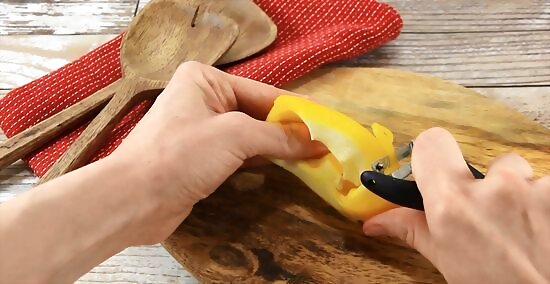
Peel the remaining flesh (optional). Now that all the flesh is accessible, complete the peeling process.
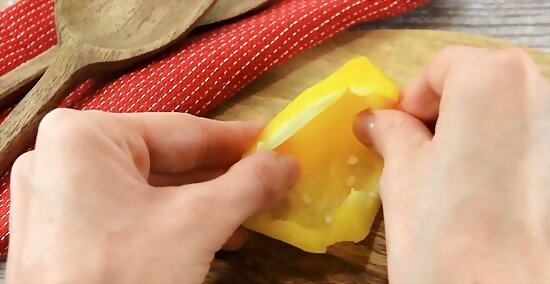
Remove the veins and seeds. Lay the sections flat on the board, and either cut the veins and seeds free or else pinch and pull them off with your fingers. Cutting is cleaner and faster, but it does mean using a knife quite close to the off-hand fingers. Most of the seeds and veins will have been removed in step 2, but there will likely be some still stuck here and there. If you’re not looking for perfectly clean julienne or dice, you may be able to skip this step.
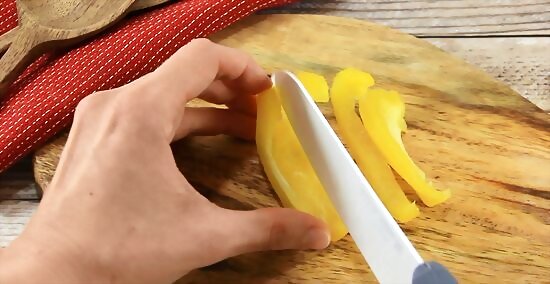
Cut lengthwise into julienne strips. Turn the sections so they run front-to-back, parallel to your knife. With a smooth cutting motion guided by the knuckles of your off hand, cut the flesh into strips of the desired thinness.
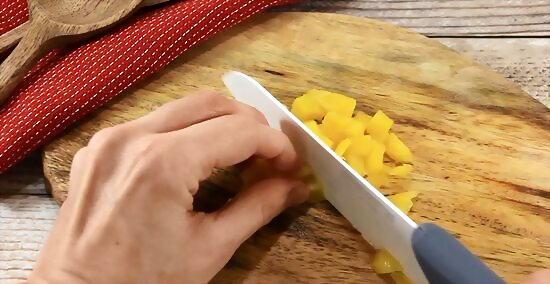
Dice the strips (optional). Rotate the julienne strips 90 degrees on the board and cut again as before, creating even dice.
Julienning Coarsely
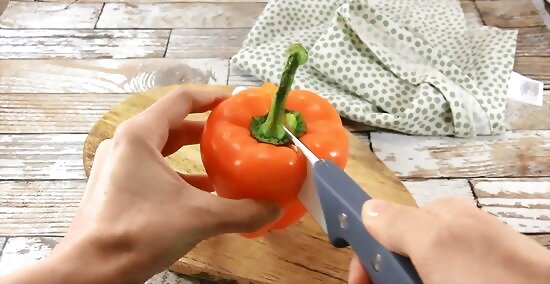
Cut the pepper in half lengthwise. Stand the pepper on its point. Using a large, sharp knife (chef's knife, etc.), cut straight down through the base of the stem and to the point, splitting the pepper.
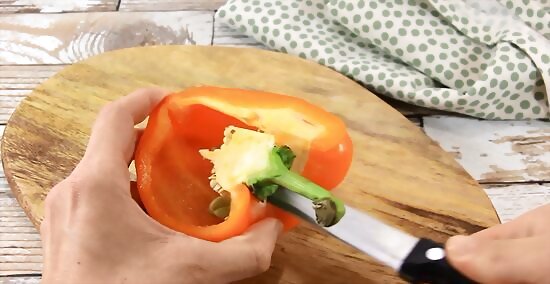
Remove the stem from both halves. With the point of the knife (a paring knife is probably easier for this part), cut around where the stem part meets the flesh, and discard the stem.
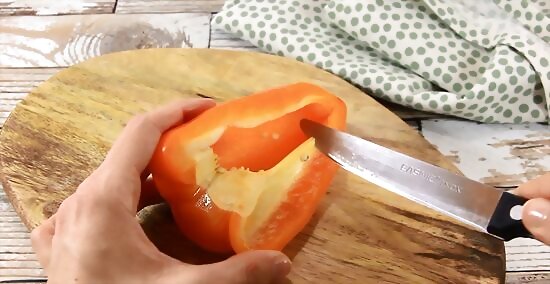
Pull out the ribs. With the knife or your fingers, cut or pull out all the whitish ribs.
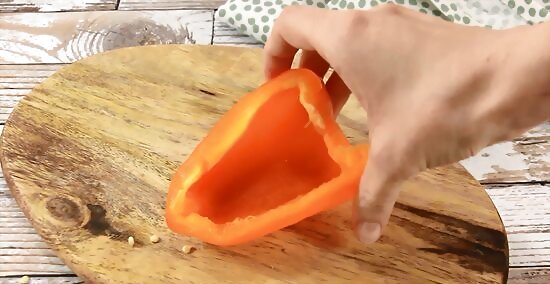
Remove the remaining seeds. Bang the pepper halves, open-end down, on the cutting board or your open hand.
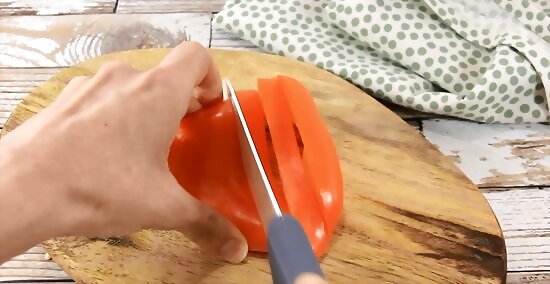
Cut in strips. Lay the pepper skin-side down, with the point end toward you. With your knife and off-hand in the usual position, knuckles guiding blade, cut in strips.
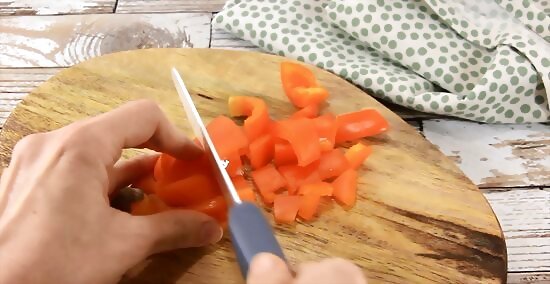
Dice (optional). Turn the strips 90 degrees on the board and cut as before. This method is faster than the previous one, but it's also less delicate. You can't get the peel off fully, for one thing. In addition, this method will tend to break the flesh here and there a little bit.



















Comments
0 comment